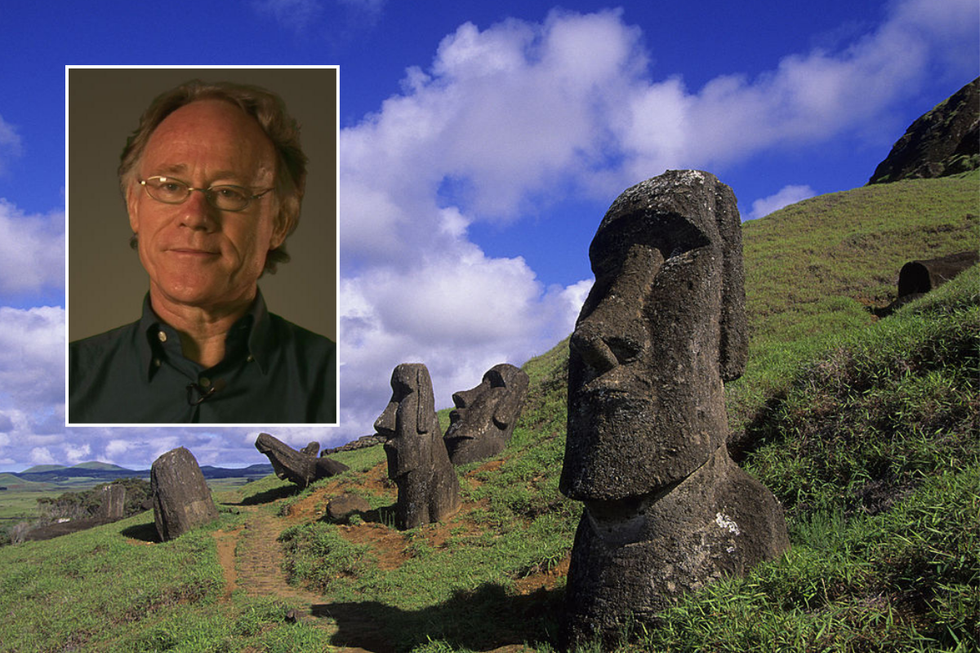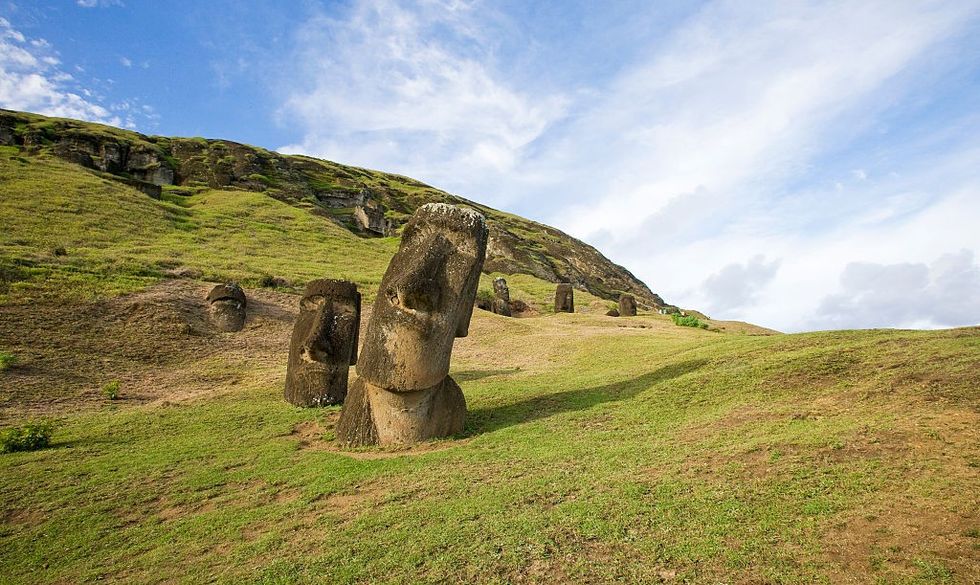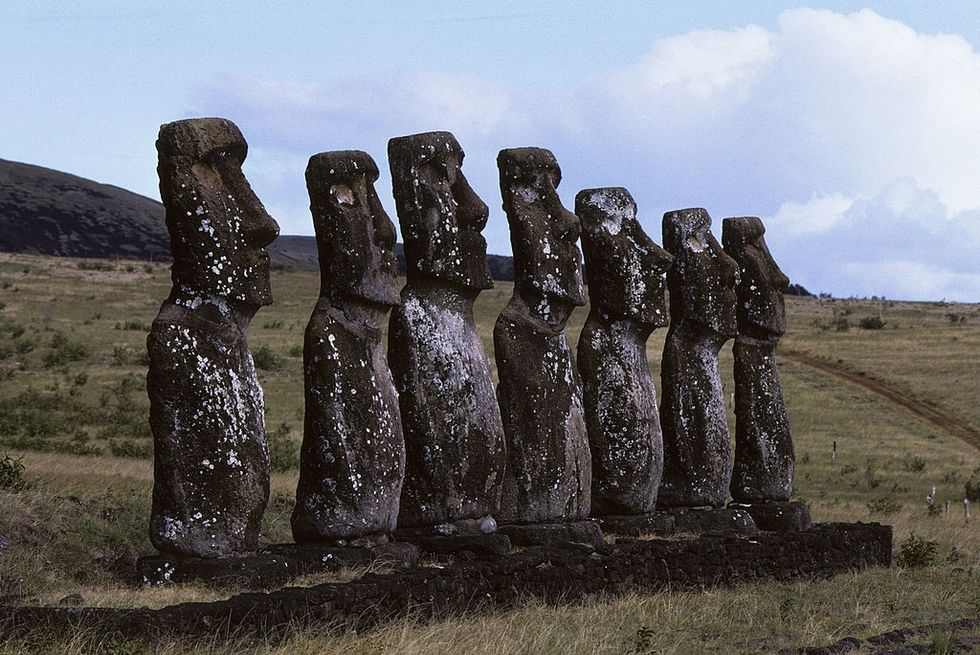A controversial new theory suggests the iconic Easter Island statues could be thousands of years older than previously believed.
British writer and explorer Graham Hancock claims the mysterious stone heads were built more than 11,000 years ago, challenging the widely accepted view that Polynesians constructed them around 900 years ago.
The island, home to approximately 1,000 large stone heads known as Moai, has long fascinated archaeologists and historians.
Hancock argues that the first settlers arrived on Easter Island about 12,000 years ago, at the end of the last Ice Age, and remained there until the arrival of Polynesian settlers.
Controversial historian Graham Hancock has pitched the theory about the heads
Getty/WikiCommons
His theory stems from a 2013 study that found evidence of banana plants on Easter Island at least 3,000 years ago.
"What I am suggesting is that the Polynesians encountered a pre-existing population on that island, evidenced by those banana [remains]... present there at least 3,000 years ago," Hancock told MailOnline.
"And that from that pre-existing population, they inherited the older traditions and songs that we see today."
A second study from 2008 revealed the island was populated with various shrubs and herbs between 14,000 and 10,000 years ago. Hancock also suggests the stone statues are older than the platforms they sit on, citing different construction techniques between the two.
LATEST SCIENCE NEWS
Heads of moai in Rano Raraku in the Rapa Nui National Park on Easter Island
Getty
Archaeologist Dr Dale F Simpson Jr has challenged Hancock's claims, pointing to similar stone statues found on other Pacific islands. These include figures on Hiva Oa in the Marquesas Islands and the Raivavae Islands, which share striking similarities with Easter Island's Moai.
The statues feature similar poses withhands clasped around their bellies and elongated figures, suggesting a connection between their builders.
Dr Simpson said: "[Easter Island] is one of the most amazing places on planet Earth that I have been to. It is riddled with mystery...But sometimes, people take micro bits of data and turn them into macro-interpretations to support claims that are not entirely substantiated."
Archaeologists have also raised concerns about the reliability of sediment dating in waterlogged areas like volcanic craters. Responding to critics, Hancock maintained his position, stating: "I see nothing in the ecology of the island to rule out a human presence that far back."
Moai Statues At Ahu Akivi
Getty
He argues that while similar statues exist across Polynesia, the Easter Island Moai evolved independently, sharing only the common feature of hands positioned near the navel.
The theory has reached millions through Hancock's Netflix series Ancient Apocalypse, which explores his "Lost Ice Age Civilization" hypothesis. The series suggests an advanced civilization existed before the end of the last Ice Age.
Hancock is now preparing for a third season of the show, which he hopes will focus on Ancient Egypt.

 By GB News (World News) | Created at 2025-01-18 18:16:06 | Updated at 2025-01-18 23:00:37
4 hours ago
By GB News (World News) | Created at 2025-01-18 18:16:06 | Updated at 2025-01-18 23:00:37
4 hours ago











